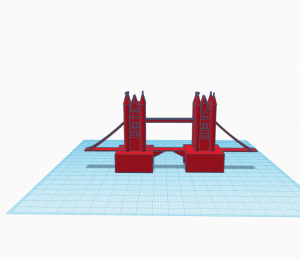
This scimatics project was called correlation vs causation. The driving question was “how are correlation and causation different”? In order to answer this question, we took many steps including creating our final product which was two correlation and causation graphs that we presented to the class last week.
We started off with a start mind map. Below you can see photos of the start mind map along with the end mind map.
Start mind map

End mind map

Next my partner and I came up with over 10 survey questions the questions we asked on our survey were.

Then with those questions and the peer critique we got from them we put the questions in a survey using google forms. Then we sent out the link to Basecamp and all the plp 9 group chats we had. While we waited for enough responses to come in we did other peoples surveys.
Clare and I got 23 responses to our survey and with that data we were able to put them in a chart with a graph attached in order to find out which two questions had correlation. Originally we thought that being an introvert or extrovert would correlate with what job you wanted to do in the future but with our data there was no correlation between those two areas.

We then changed our focus to the questions about how comfortable people are around other people with how comfortable you are then speaking your mind. Our second correlation was about how comfortable you were speaking your mind and how much screen time a person had on the average in a day.
We not only found correlation with our first graph but also causation. The  more comfortable you are around people the more comfortable you are in speaking your mind. Unlike the first graph, we did not find causation in the second graph.
more comfortable you are around people the more comfortable you are in speaking your mind. Unlike the first graph, we did not find causation in the second graph.
Finally Clare and I presented in front of the class in a key note presentation. I think our key note slides were good because we didn’t put paragraphs instead we had bullet points that highlighted what we said. Our presentation skills were not as strong as our slides. We kept reading off of our iPads and did not look up at the audience. I feel like I could speak more clearly and confidently in the future.
Curricular competencies
Planning and Conducting: select and use appropriate equipment including digital technologies to systematically and accurately collect and record data.
I achieved an accomplished in this competency. I conducted a survey through google forms and found two correlations using the survey results. I used Numbers app to create the graphs and I used the keynote to present my results to the class. One graph was a weak positive correlation while the other was a weak negative correlation. Clare and I were not able to find a strong correlation with the data we collected.
Communicating and Representing: use mathematical vocabulary and language to contribute to mathematical discussions.
I achieved an extending in this competency as I used mathematical verbal and pictorial explanations that helped the class understand the data. Clare and I  were able to successfully explain how one of the graphs had both causation and correlation while the other one did not have causation. We showed the difference between correlation and causation and how correlation is sometimes falsely associated with causation. We used a funny cartoon to help make our point.
were able to successfully explain how one of the graphs had both causation and correlation while the other one did not have causation. We showed the difference between correlation and causation and how correlation is sometimes falsely associated with causation. We used a funny cartoon to help make our point.
Applying and Innovating: contribute to care for self, others, community, and world through collaborative approaches.
I achieved an accomplished on this competency by conducting good, ethical surveys, using my class time efficiently, and being partners with Clare. First of all we made the survey anonymous so people feel more comfortable being honest in the survey. Then Clare and I used our class time well and went to LAC as needed. We met early a couple mornings to work on our project and we would FaceTime to create our graphs and prepare for the presentation. One time she was in a meeting and I did not post the survey until she had read it over and we talked about it. We both can give our opinions and if we disagree we compromise or ask for a third person’s opinion.
It was challenging to find correlations. I did not think it would be too hard but as we read the data our original ideas did not correlate. I learned that the questions I ask are important to ask well and that you need be open to look for other correlations and other factors. Presenting is also hard for me. Clare and I made good slides but we were very nervous and did not speak clearly. It would be interesting to conduct more surveys in the future to see what else I could learn.






